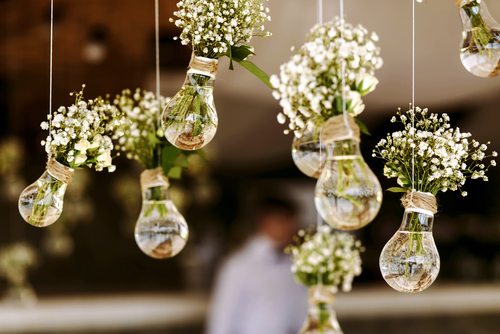It’s hard to imagine a time where wedding invitations were not beautifully embossed, or elegantly foiled. But the fact is that we haven’t always been so spoilt with choice when inviting guests to wedding nuptials.
Hear ye, hear ye
In the days before the humble printing press, it was the job of a town crier to announce the daily news to townsfolk. The crier would stand in the town square and make his announcements with an iconic “Hear ye, hear ye” bellow. In those days, the daily news included wedding announcements. Anyone within earshot of the town crier could consider themselves invited to the celebration. Now imagine trying to manage a guest list that way!
Written announcements weren’t very popular during the middle ages because illiteracy was so widespread. Writing down any announcement was a pointless exercise unless you were amongst the educated class. Wealthy families usually commissioned monks to produce intricate hand-written wedding invitations using calligraphy. These were handed out very selectively and only to those who belonged to the same social standing. The wealthy certainly didn’t use the town crier to invite one and all.

Enter the printing press
The printing press was invented in 1447, but the town crier custom continued for commoners until at least the early 1600s. The main challenge was still high illiteracy levels. Even if the wedding guests were educated, the printing technique was too basic to produce stylish invitations. Even if printed, they still wouldn’t always have the hoped-for appearance.
One practice that did take off, though, was the use of the newspaper to replace the job of town crier. In the early half of the 1600s, newspapers were becoming a popular sight on the street. The wealthier, literate class began placing wedding announcements in the local town newspaper. The printing quality was still very basic and only suitable for public announcements.
Printing improves
Higher-quality printing was only made possible with the invention of Ludwig von Siegen’s metal-plate engraving printing press. This method allowed artists to combine the art of calligraphy with the craft of printing.
An artisan would engrave the wording of the invitation on a metal plate. The lettering was skillfully engraved in reverse. The lettering would then be covered with ink and the paper smoothed on top of the plate to create the print. These engraved invitations took some time to dry, so a tissue paper would be placed on top to stop ink smudges.
The engraving technique put the art of printing in reach of the emerging middle class in a society that was becoming increasing literate. The downside was that an individualized plate needed to be engraved for each recipient to reflect each person’s name.

Printing becomes popular
The invention of Lithography in 1798 was another step forward in the printing industry. No longer produced individually, Lithography’s sharp, distinct inking paved the way to elegant mass-market wedding invitations. However, the U.S. postal service was known to be so unreliable during that era that couples used horseback courier to deliver their invitations instead.
To prevent soiling, the sender would double-up on the envelope. The courier or butler would remove the soiled envelope before presenting the unblemished inner envelope to the recipient. This tradition still continues when we choose to use wraps or pocket wedding invitations to enclose an invitation inside an outer envelope.
Poor man’s printing
World War II led to a greater spike in rapid industrial growth. It also left the average man with a desire to mimic the lifestyle of the elite. Thermography was an industrial print technique which allowed the printer to achieve a beautiful, raised lettering. The final product looked similar to the old technique of metal-plate engraving, but without the messy ink or high costs. The technique was so efficient that it was referred to as poor man’s engraving. It was at this point that professionally created wedding invitations became affordable to the majority. This was the start of an era of commercially printed wedding invitations, which were only now becoming an option for a couple on a budget.
Modern elegance
Today, we have a variety of choices. Letterpress printing creates text with a deep impression that adds to the sensory experience when receiving an invitation. Laser engraving can be used to engrave wood, acrylic or metal veneer invitations. An embellished invitation is one with an added bow, ribbon or ruffle.

The list of choices is endless, and you no longer must pay an artisan an arm and a leg to do the job for you. The internet has made it incredibly easy to choose, design and order invitations online. This do-it-yourself option allows you maximum input in your invitation design while entrusting the printing to professionals.
An invitation to happiness
Rustic or traditional, foiled or letterpress, embellished or vintage — wedding invitation choices are as unending as betrothed love. If you don’t find anything you like, then you could always hire yourself a town crier.



